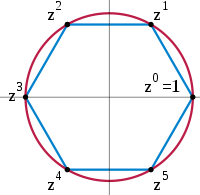Tits group
| Algebraic structure → Group theory Group theory |
|---|
 |
|
Modular groups
|
Infinite dimensional Lie group
|
In the area of modern algebra known as group theory, the Tits group 2F4(2)′, named for Jacques Tits (French: [tits]), is a finite simple group of order
- 211 · 33 · 52 · 13 = 17971200
- ≈ 2×107.
It is sometimes considered a 27th sporadic group.
History and properties
The Ree groups 2F4(22n+1) were constructed by Ree (1961), who showed that they are simple if n ≥ 1. The first member of this series 2F4(2) is not simple. It was studied by Jacques Tits (1964) who showed that it is almost simple, its derived subgroup 2F4(2)′ of index 2 being a new simple group, now called the Tits group. The group 2F4(2) is a group of Lie type and has a BN pair, but the Tits group itself does not have a BN pair. Because the Tits group is not strictly a group of Lie type, it is sometimes regarded as a 27th sporadic group.[1]
The Schur multiplier of the Tits group is trivial and its outer automorphism group has order 2, with the full automorphism group being the group 2F4(2).
The Tits group occurs as a maximal subgroup of the Fischer group Fi22. The groups 2F4(2) also occurs as a maximal subgroup of the Rudvalis group, as the point stabilizer of the rank-3 permutation action on 4060 = 1 + 1755 + 2304 points.
The Tits group is one of the simple N-groups, and was overlooked in John G. Thompson's first announcement of the classification of simple N-groups, as it had not been discovered at the time. It is also one of the thin finite groups.
The Tits group was characterized in various ways by Parrott (1972, 1973) and Stroth (1980).
Maximal subgroups
Wilson (1984) and Tchakerian (1986) independently found the 8 classes of maximal subgroups of the Tits group as follows:
L3(3):2 Two classes, fused by an outer automorphism. These subgroup fix points of rank 4 permutation representations.
2.[28].5.4 Centralizer of an involution.
L2(25)
22.[28].S3
A6.22 (Two classes, fused by an outer automorphism)
52:4A4
Presentation
The Tits group can be defined in terms of generators and relations by
where [a, b] is the commutator. It has an outer automorphism obtained by sending (a, b) to (a, bbabababababbababababa).
Notes
- ↑ For instance, by the ATLAS of Finite Groups and its web-based descendant
References
- Parrott, David (1972), "A characterization of the Tits' simple group", Canadian Journal of Mathematics, 24: 672–685, doi:10.4153/cjm-1972-063-0, ISSN 0008-414X, MR 0325757
- Parrott, David (1973), "A characterization of the Ree groups 2F4(q)", Journal of Algebra, 27: 341–357, doi:10.1016/0021-8693(73)90109-9, ISSN 0021-8693, MR 0347965
- Ree, Rimhak (1961), "A family of simple groups associated with the simple Lie algebra of type (F4)", Bulletin of the American Mathematical Society, 67: 115–116, doi:10.1090/S0002-9904-1961-10527-2, ISSN 0002-9904, MR 0125155
- Stroth, Gernot (1980), "A general characterization of the Tits simple group", Journal of Algebra, 64 (1): 140–147, doi:10.1016/0021-8693(80)90138-6, ISSN 0021-8693, MR 575787
- Tchakerian, Kerope B. (1986), "The maximal subgroups of the Tits simple group", Pliska Studia Mathematica Bulgarica, 8: 85–93, ISSN 0204-9805, MR 866648
- Tits, Jacques (1964), "Algebraic and abstract simple groups", Annals of Mathematics. Second Series, 80: 313–329, ISSN 0003-486X, JSTOR 1970394, MR 0164968
- Wilson, Robert A. (1984), "The geometry and maximal subgroups of the simple groups of A. Rudvalis and J. Tits", Proceedings of the London Mathematical Society. Third Series, 48 (3): 533–563, doi:10.1112/plms/s3-48.3.533, ISSN 0024-6115, MR 735227